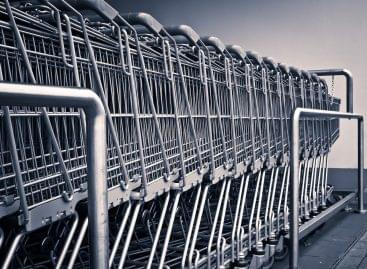Payment by QR code is coming in Hungary
At the turn of the 1980s and 1990s, due to its technological backwardness, Hungary skipped payment by check and went directly to payment by bank card. In contrast, in other countries, such as Slovenia, the use of checks was common even in the 1990s, which imposed a significant administrative burden on people.
In the case of China, it similarly missed a technological step, but instead of bank card payment, QR code payment took over the leading role. The spread of QR code payments has allowed them to bypass traditional bank card companies, so Alipay and Wechat dominate in China.
In Hungary, even though bank card payment is dominant, it comes with significant costs: merchants can pay up to 3% fee per transaction, which significantly reduces their profit. This motivated the Magyar Nemzeti Bank (MNB) to make it mandatory for all banks to offer the QR code payment method from September 2023, which offers a cheaper and transaction tax-free alternative.
The QR code payment, which enables an immediate transfer between the buyer and the seller, is not only more economical, but also faster. The payment method is called “qvik”, which refers to speed, and customers are not charged any extra costs when using it. As a result, if merchants can use this method even 1.5% cheaper than traditional card acceptance, a significant improvement in the speed of introduction can be expected.
Related news
Festive comfort at the Basilica – with Wolt’s new solution, you can enjoy the atmosphere of the Advent Basilica without waiting in line
🎧 Hallgasd a cikket: Lejátszás Szünet Folytatás Leállítás Nyelv: Auto…
Read more >Project managers play a strategic role: this year’s winner of the Project Manager of the Year Award announced
🎧 Hallgasd a cikket: Lejátszás Szünet Folytatás Leállítás Nyelv: Auto…
Read more >This is how salaries will change in the future – an expert gave an opinion
🎧 Hallgasd a cikket: Lejátszás Szünet Folytatás Leállítás Nyelv: Auto…
Read more >Related news
NGM: The minimum wage will increase by 11 percent in 2026, and the guaranteed minimum wage by 7 percent
🎧 Hallgasd a cikket: Lejátszás Szünet Folytatás Leállítás Nyelv: Auto…
Read more >The first Hungarian IT teacher would be 110 years old on January 2: Mihály Kovács taught computer science before PCs
🎧 Hallgasd a cikket: Lejátszás Szünet Folytatás Leállítás Nyelv: Auto…
Read more >New Year’s Eve: shortened opening hours in stores – general store closure on January 1
🎧 Hallgasd a cikket: Lejátszás Szünet Folytatás Leállítás Nyelv: Auto…
Read more >






